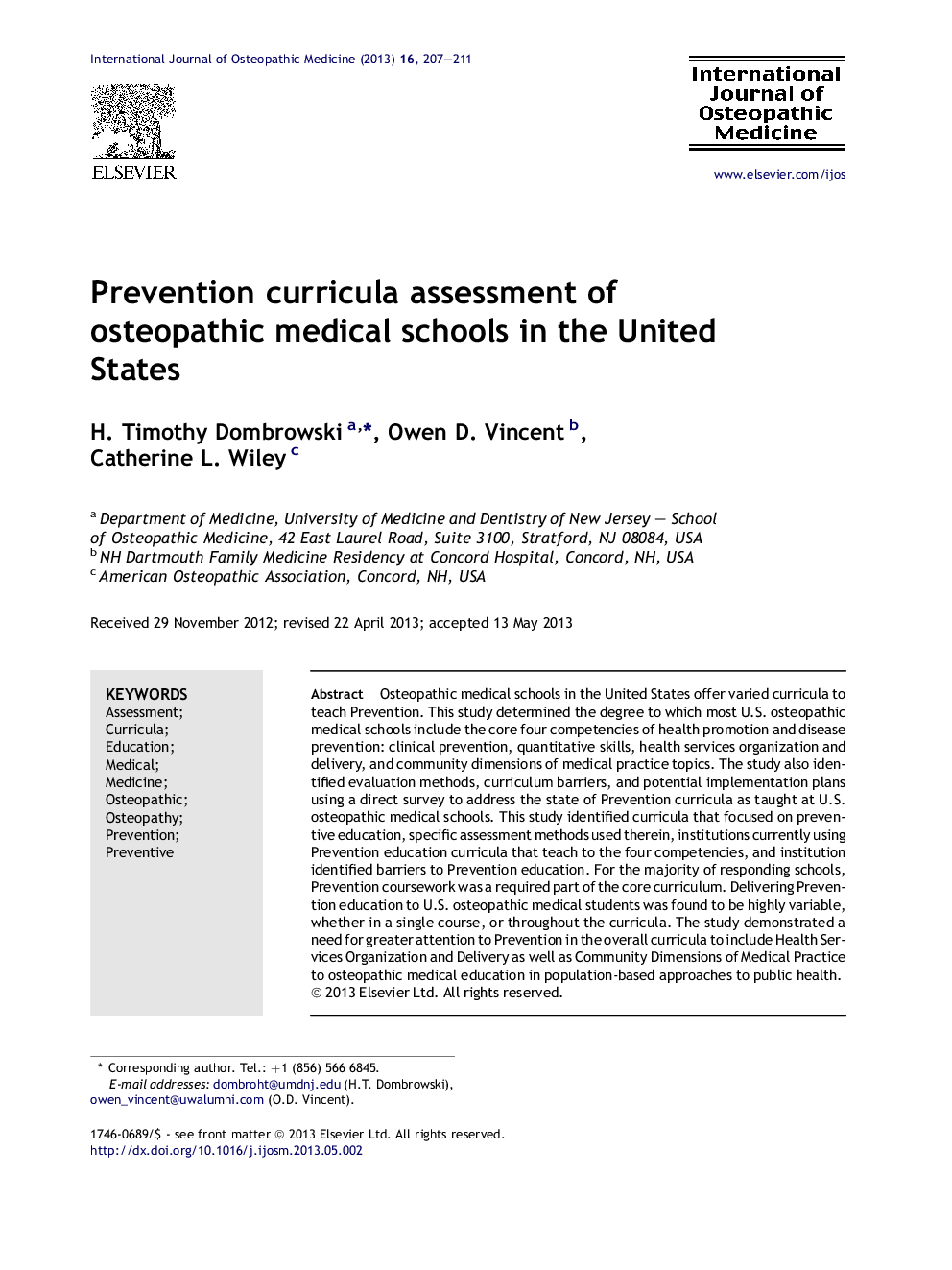| Article ID | Journal | Published Year | Pages | File Type |
|---|---|---|---|---|
| 2618550 | International Journal of Osteopathic Medicine | 2013 | 5 Pages |
Osteopathic medical schools in the United States offer varied curricula to teach Prevention. This study determined the degree to which most U.S. osteopathic medical schools include the core four competencies of health promotion and disease prevention: clinical prevention, quantitative skills, health services organization and delivery, and community dimensions of medical practice topics. The study also identified evaluation methods, curriculum barriers, and potential implementation plans using a direct survey to address the state of Prevention curricula as taught at U.S. osteopathic medical schools. This study identified curricula that focused on preventive education, specific assessment methods used therein, institutions currently using Prevention education curricula that teach to the four competencies, and institution identified barriers to Prevention education. For the majority of responding schools, Prevention coursework was a required part of the core curriculum. Delivering Prevention education to U.S. osteopathic medical students was found to be highly variable, whether in a single course, or throughout the curricula. The study demonstrated a need for greater attention to Prevention in the overall curricula to include Health Services Organization and Delivery as well as Community Dimensions of Medical Practice to osteopathic medical education in population-based approaches to public health.
